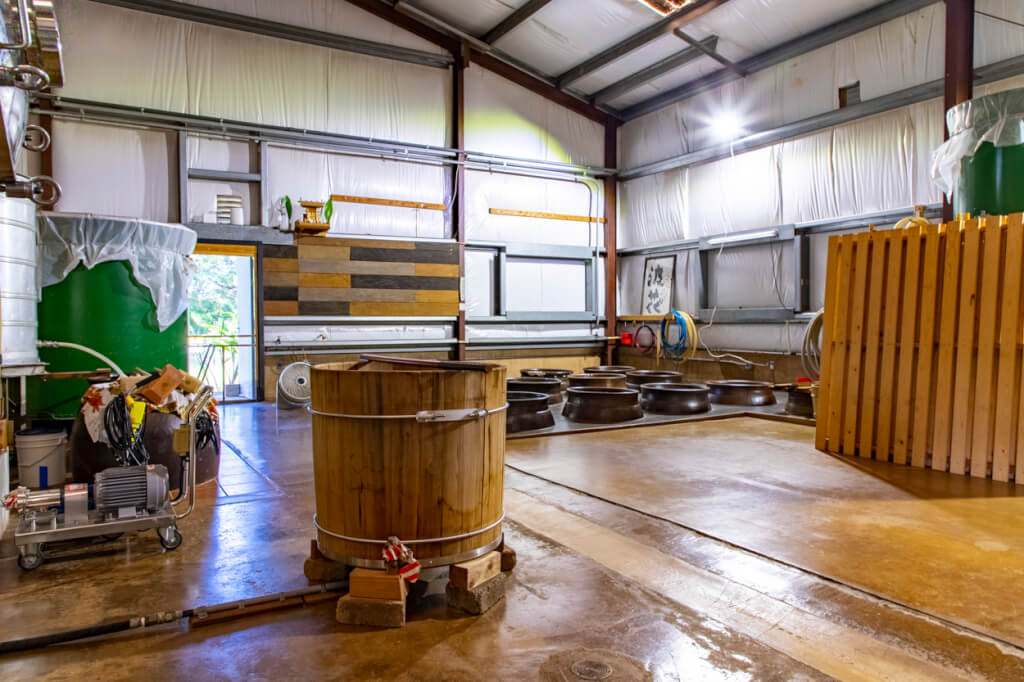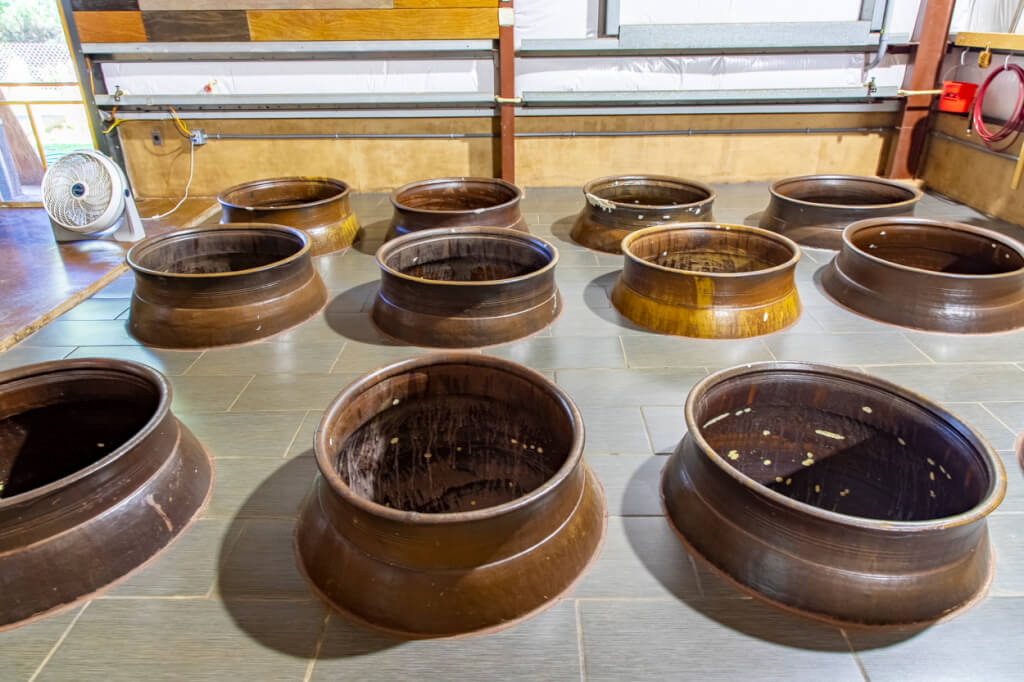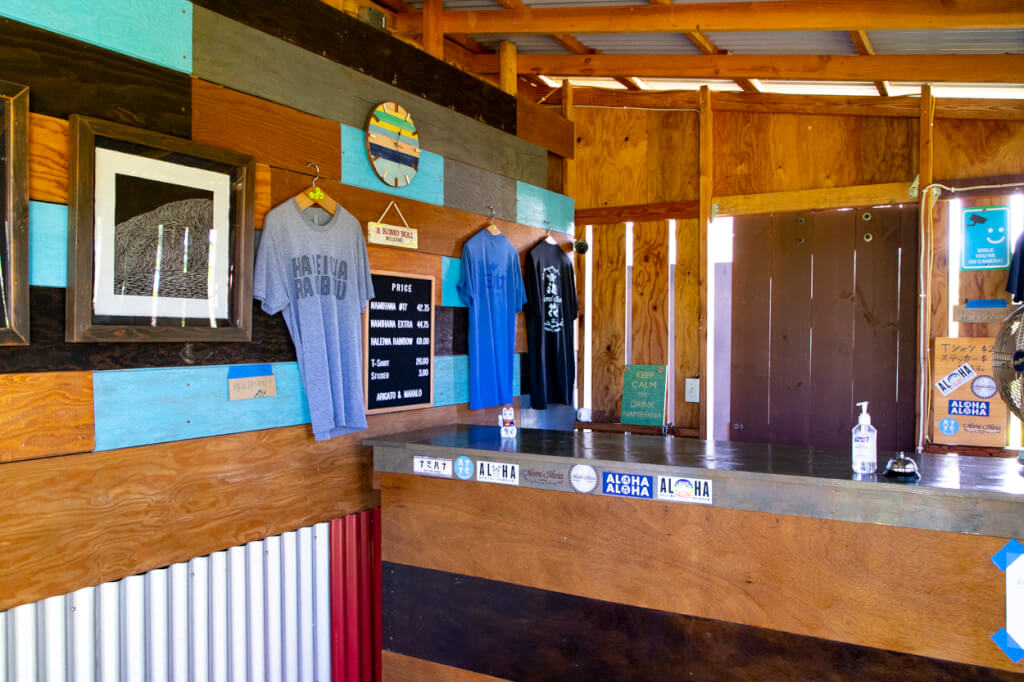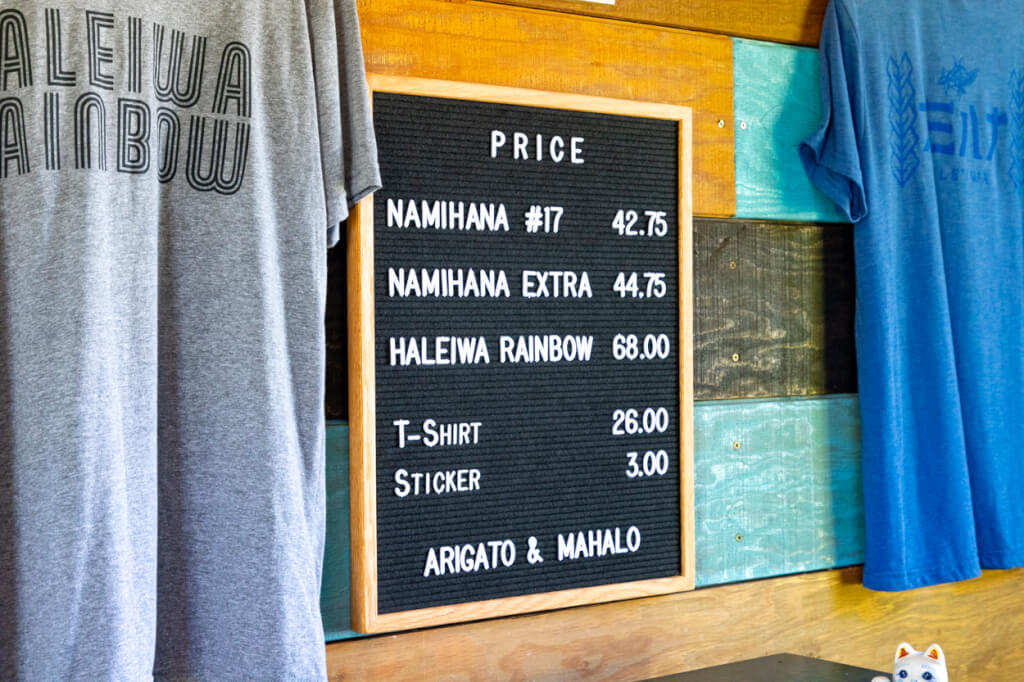You all know I’m a fan of Hawaiian wine and Agricole-style rum. But, Hawaii’s homegrown adult beverage industry is more diverse than that – you just have to know where to look. So that’s how we found ourselves visiting the Hawaiian Shochu Company.
Before we get into our visit, let’s discuss some basics – what is Shochu? According to Hawaiian Shochu Company proprietor Ken Hirata, Shochu is a distilled Japanese beverage made of rice, sweet potato, barley, etc. and Koji. Though it looks similar, it differs significantly from Sake and Korean Soju. Sake is a brewed drink made of rice and Koji, while Soju is a distilled drink of rice or sweet potato, though it doesn’t use Koji. Simple, right?
As it turns out, we have a Shochu distillery here in Hawaii. In fact, the Hawaiian Shochu Company has been around for about 10 years. Owner Ken Hirata got the desire to produce Shochu using local ingredients during a visit here. The problem was he didn’t know how to make Shochu. So, prior to moving to Hawaii, he apprenticed under a Shochu master in Japan. In fact, the fermentation vats he uses today were a gift from his master.
Visiting the Hawaiian Shochu Company
The Hawaiian Shochu Company is out on Haleiwa on Oahu’s North Shore. In fact, the place is hidden in plain site. You’ll find their facility on a back road right off of Kamehameha Highway near all of the food trucks! But don’t randomly head over – you need to schedule an appointment to make a purchase or take a tour.
Scheduling an Appointment
To see what’s available at the distillery, I strongly suggest checking out Hawaiian Shochu’s Facebook page. However, note that special edition products go out QUICK. That said, once you figured out when you want to visit, email Hirata-san at HIRATA@HISHOCHU.com
Getting to the Hawaiian Shochu Company
There are a few addresses for Hawaiian Shochu on the web. Many are incorrect. Know that the correct address for this place is 66-542 Haleiwa Rd, Haleiwa, HI 96712. When you get there, look for a gate with a small sign that says Hawaiian Shochu Company on it.
The Shochu
During our visit, he had Nami Hana 17 (the 17th iteration of their original Shochu), Nami Hana Extra, and Haleiwa Rainbow Gin available. Nami Hana Extra is the same as the 17, just aged longer. Hirata-san said they did it because they had time during the pandemic but doesn’t think they’ll do it again because it’s too much effort. The gin is also new and incorporates locally grown botanicals rather than the juniper-heavy blend most are used to.

About once a year, Hirata-san produces very limited quantities of limited edition Shochus. In the past, that included Banzai Strength Shochu aged with Sakura wood, Banzai Strength aged with Mizunara and Kiawe, and Banzai Strength aged with pineapple.

The Shop
If you come just to shop, as most people do, you’ll need to email Hirata-san in advance to reserve a time, check on inventory, and reserve your specific bottles. When you get there, you’ll find the shop right out front near where you park. It’s a small space, which is why you need to reserve a time ahead, but it’s pretty cool! Beyond the Shochu, you can also pick up t-shirts (which come with stickers), or stickers on their own. Cash and cards are accepted.
The Tour
If you booked a tour, Hirata-san will lead you out back to the entrance of the production area. When you get there, you’ll need to change into sanitized indoor slippers to help keep the area clean. Then, you’ll sit down at a table where Hirata-san will give you a lesson on Shochu and how it differs from other spirits, as well as a bit of their own history.
Koji Room
Afterward, you’ll get up and walk around the space a bit as Hirata-san explains the process in a bit more detail. Our first stop was the Koji room, which is where Hirata-san grows the Koji he needs to ferment his Shochu. The room was constructed entirely by hand by Hirata-san himself and is where the Koji-spiked rice spends 48 hours. Over that time, Hirata-san must tend to the Koji every 3-4 hours. Insane!

Rice Steamer
To cook the rice that they use to make Koji, Hirata-san uses this wood steamer. In it, he steams 200 pounds of rice, which then gets transferred to cloth-lined pallets to cool before heading into the Koji room.

Fermentation
Once the Koji is ready, it goes into one of these vessels in the floor. As mentioned earlier, these were a gift from Hirata-san’s Shochu master in Japan and are likely over 100-years-old. Crazy, right? Anyhow, the Koji spends eight to 10 days by itself in the vessels, fermenting into low-proof alcohol not all that different from Sake. You could drink it at this point, but it wouldn’t be all that great.

Once the Koji is ready to go, Hirata-san adds steamed sweet potato into the vessels. The specific type varies from batch to batch, with the single requirement being that they’re grown in Hawaii. About 1,000 pounds of cleaned and steamed sweet potatoes go into the vessel with its 200 pounds of Koji rice, after which the potatoes are broken up using a long wood masher. The mash then ferments for a couple of weeks, growing more active (bubbling) as time goes on.
Distilling
Once the mash is done fermenting, Hirata-san distills his new to obtain the final product. Here, however, he uses an old-fashioned single-pot wood still. This traditional still is seldom used by larger producers. But, here it continues to make sense because of the low production volume.

As the Shochu comes out of the still, it goes into another vessel. Here, you can see Hirata-san explaining the distilling process and can see the mashers atop the collection vessels.
Aging
Once distillation is complete, Hirata-san pumps the Shochu into a large stainless steel vessel to let it age for a month or so. After that, the spirt goes into bottles for sale.

Copper Still
Upon entering Hirata-san’s production facility, one thing you’ll immediately notice is a western copper still. I asked him about this and Hirata-san states that the still was gifted to him from a manufacturer that toured the facility years ago. The manufacturer wanted Hirata-san to experiment with other types of spirits based on his already excellent Shochu. And experiment he has. Hawaiian Shochu’s Haleiwa Rainbow Gin utilizes this still to distill Shochu with Hawaiian botanicals to create his unique gin. It is the only multi-distillation product Hirata-san currently offers and it’s great! That said, it’s pricey stuff, as one bottle of gin takes 1.6 bottles of Shochu to produce.

Wrapping it Up
After completing the tour, you’ll return to the table where it all began for further discusion, questions, and to gather your things. Afterwards, you can head back out front and make some purchases if you like – I highly encourage you to do so, as Hirata-san does these tours for free. While he doesn’t ask for anything, I think it’d be great to make a purchase to support their business and make his time worthwhile. Even though he loves conversing and sharing, regardless.
Final Thoughts
The Hirata-san’s Hawaiian Shochu Company is small enough that it largelty flies under the radar. Sure, they have a strong cult following and are featured in local publications. But, they have room to grow. So if you’ve never been to the Hawaiian Shochu Company, I encourage you to reach out and pay them a visit. Hirata-san is a genuinely friendly, knowledgeable, passionate guy that also happens to make a fantastic product. And while I’m by no means a regular drinker, I do plan on continuing to patronize and support Hirata-san and his endeavours. This is preciesely the type of businesses and individuals I love.


